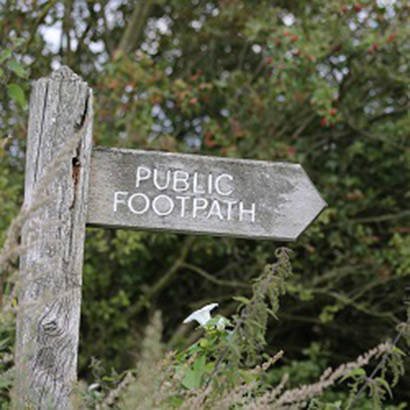
On the hills and riverbanks near Murfreesboro, Tennessee, New Year’s Day, 1863, dawned to the sounds of gunfire. In the Battle of Stones River, Union forces repulsed two Confederate attacks near Murfreesboro—in the clash that produced the highest percentage of casualties on both sides of any of the major battles of the Civil War.
Three hundred thousand tourists visit the battlefield and surrounding area each year—and the signs that guide them along the Murfreesboro Greenway System (part of the city’s parks and recreation department) tell the story of the Battle of Stones River—a conflict in which Union forces gained morale following their Fredericksburg defeat; and Confederate hopes for control of central Tennessee were dashed.
It is a story central to the Western theater of the Civil War. Over the years, however the signs interpreting the context and the course of the conflict had weathered; and many had become illegible.
The signage, as Melinda Tate, the Greenway’s program coordinator put it, “was on year 15 of a 10-year warranty.” Through the Great American Trails grant, Murfreesboro Parks and Recreation was able to give its signs a facelift in time for the battle sesquicentennial—replacing artwork and graphic panels along the trail and at trailheads to improve visitors’ experience.
The management of the local LongHorn Steakhouse, Tate says, was fully engaged throughout the project, seeking volunteer opportunities for their staff and looking for ways to serve in other parks and recreation programs as a result of the relationships forged. She observes that the new signage has been important to the community not just for the immediate need it has filled—but as “a reflection of the wonderful things we can accomplish when working together with members of our community, building great partnerships between businesses and services providers.”
Murfreesboro offers an unusual example of a local parks and recreation trail that provides a national service. And this particular refurbished section of trail connects key historical sites such as the Stones River battlefield and the 225-acre Fortress Rosecrans, the Civil War’s largest fort. In fact, the National Park Service conducts a weekly bicycle tour for residents and visitors using portions of the Greenway (and its signs) to relate the Civil War history.
Local residents also enjoy the Greenway for all of the recreation, fitness, and transportation opportunities it offers. Tate says the refurbished trail is used by residents of all ages, from young bicyclists and skateboarders to older citizens getting some fresh air. She adds that is also popular among the area’s “exponentially growing” running community—and its “Stroller Coasters” program for parents pushing young children in strollers.
The public feedback about the improvements is overwhelmingly positive, Tate comments. In a place where local needs intersect with a national historic preservation priority, the sense is that “the Greenway is being maintained, making it a safer and more pleasant experience for everyone—and that we are preserving our great history for generations to come.”

